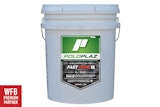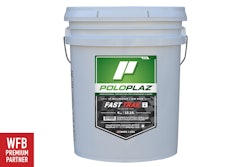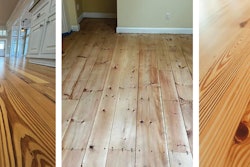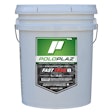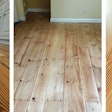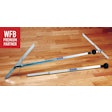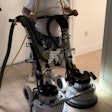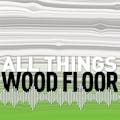When they are working properly, most of us take our tools for granted. We only begin to ask questions when they stop working. Whether it involves a neighborhood of tract homes or a huge gymnasium, every job has its own character and challenges. Those challenges require the proper tools and techniques for the application, and choosing the right abrasives will help you meet the challenges of each individual job. To do that, it helps to know a little bit about how abrasives actually work.
Whether you are using professionalgrade product or a premium abrasive product with premium minerals, the physics behind how sandpaper works is the same. You should think of each abrasive particle as a cutting tool. When the moving cutting tool comes into contact with the floor under pressure, it slices a path in the wood or finish. Multiply this action millions of times across the surface of your abrasive.
The NWFA recommends using a "three-cut system," ending with the finest grit that works for your application. Determine which grit you would like to finish with, then work backward from there, skipping no more than one grit.
For example, if you would like to finish sanding with 100 grit, skip 80 and use 60 grit, etc. Your sanding sequence would be 40, 60 and 100 grit.
The three-cut system helps remove coarse-grit scratches efficiently. Coarsegrit sandpaper leaves a deep scratch pattern in the floor. With each successive grit, you attempt to take those scratches out. Therefore, if you are able to start with 50 grit instead of 36, scratches from your first cut will be finer and easier to remove. Skipping more than one grit makes it more difficult to blend out coarse-grit scratches.
During the sanding process, some heat is generated. When the product is cutting aggressively, most of the heat is removed from the sandpaper and the floor with the sanding dust. When the cutting process slows down, there is less dust (and less heat) being removed. When the productivity slows down, more heat stays on the surface of the floor and the sandpaper. If the contractor pushes the sandpaper too hard or beyond its useful life, burning of the floor can result.
The ability of sandpaper to keep cutting aggressively depends on several factors:
Fracturing Abrasive Particles
Depending on the composition, abrasive particles are designed to fracture at different pressures. Under the right conditions, abrasive particles will break to form new cutting surfaces. Larger particles break down, allowing other slightly smaller particles to become engaged with the work surface. Premium-grade products use abrasive particles engineered with superior sharpness and strength to maintain aggressive cutting over a long life.
Removal of Swarf
"Swarf " is the rarely used (and attractive-sounding) technical term for the stuff that plugs up your sandpaper. It can be composed of finish, wood, wood resin, carpet pad or anything else you are trying to remove from the floor. When swarf plugs the abrasive particles, it prevents them from doing their work, spelling the death of an abrasive. If you take a close look at a loaded abrasive, you will find a lot of sharp particles that have never been used that are covered in swarf.
Working Pressure
Excessive working pressure creates heat and can prematurely load sandpaper with swarf. The working pressure you should use on a refinish job is normally different from the one you should use on a new floor. Heavy stock removal with coarse grits requires a higher drum pressure, while final sanding with fine grits requires a lower drum pressure.
Materials Being Sanded
Harder species (like maple or many exotics) use up more of the abrasive than softer materials. If you were to look closely at the abrasive after you were done sanding, you would see a fair amount of abrasive particle fracturing.
Most finishes are easy to cut but tend to load the surface of the abrasive. Open-coat abrasives address this problem by having open areas in the sandpaper that allow the finish to be removed. In a closed-coat abrasive, the finish gets jammed into other grain particles and is not removed efficiently from the sandpaper.
Softer woods (such as pine) that have a lot of resin require lighter drum pressure to prevent excessive wear layer removal. Using a lighter working pressure creates less heat; you are less likely to prematurely load up your belt with wood resin.
Final Tips
Keep the following things in mind every time you go to do a sanding job: • Evaluate the job site thoroughly and choose the right machine and abrasive for the job.
• Every job site is different. Cut rates will be different depending on the job's conditions.
• Pushing the product beyond its useful life can cost you extra time on the job.
• Call the manufacturer for advice if you have any questions regarding an application or problem. Working with the contractor is our business; it helps us have happy customers and build better products.









